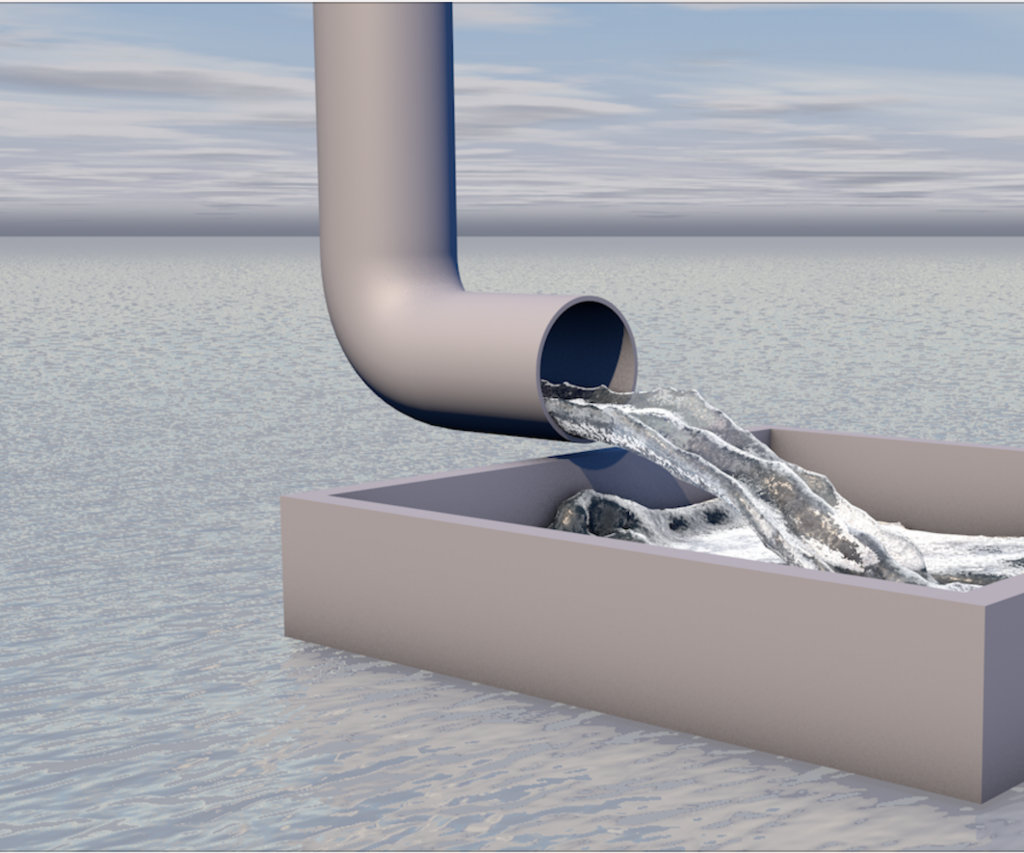
Photographic developer
In the processing of photographic films, plates or papers, the photographic developer (or just developer) is one or more chemicals that convert the latent image to a visible image. Developing agents achieve this conversion by reducing the silver halides, which are pale-colored, into silver metal, which is black when in the form of fine particles.[1] The conversion occurs within the gelatine matrix. The special feature of photography is that the developer acts more quickly on those particles of silver halide that have been exposed to light. When left in developer, all the silver halides will eventually be reduced and turn black. Generally, the longer a developer is allowed to work, the darker the image.
Development
The developer selectively reduces silver halide crystals in the emulsion to metallic silver, but only those having latent image centres created by action of light.[4] The light sensitive layer or emulsion consists of silver halide crystals in a gelatin base. Two photons of light must be absorbed by one silver halide crystal to form a stable two atom silver metal crystal. The developer used generally will only reduce silver halide crystals that have an existing silver crystal. Faster exposure or lower light level films usually have larger grains because those images capture less light. Fine grain films, like Kodachrome, require more light to increase the chance that the halide crystal will absorb at least two quanta of light as they have a smaller cross sectional size. Therefore, silver halide crystal size is proportional to film speed. The metallic silver image has dark (black) appearance. Once the desired level of reduction is achieved the development process is halted by washing in a dilute acid and then the undeveloped silver halide is removed by dissolving it in a thiosulfate solution, a process called fixing. Most commercial film developers use a dual solution or "push" (pushes the films speed) development (compensating developer, like Diafine) procedure where the reducing agent e.g. hydroquinone solution soaks into and swells the gelatin then the film is introduced into the alkaline solution which activates (lowers reduction potential) of the developer. The areas with the most light exposure use up the tiny amount of developer in the gelatin and stop making silver crystal before the film at that point is totally opaque. The areas that received the least light continue to develop because they haven't used up their developer. There is less contrast, but time is not critical and films from several customers and different exposures will develop satisfactorily.
The time over which development takes place, and the type of developer, affect the relationship between the density of silver in the developed image and the quantity of light. This study is called sensitometry and was pioneered by F Hurter & V C Driffield in the late 19th century.
Colour development
In colour and chromogenic black-and-white photography, a similar development process is used except that the reduction of silver simultaneously oxidizes the paraphenylene colour developing agent which then takes part in the production of dye-stuffs in the emulsion by reacting with the appropriate couplers. There are three distinct processes used here. The C-41 process is used for almost all colour negative films and in this process dye couplers in the emulsion react with the oxidized colour developing agent in the developer solution to generate the visible dyes. An almost identical process is then used to produce colour prints from films. The developing agents used are derivates of paraphenylene diamine.
In colour negative films,[6] there are 3 types of dye couplers. There are the normal cyan, magenta and yellow dye forming couplers, but also there is a magenta coloured cyan masking coupler and a yellow coloured magenta masking coupler. These form respectively normal cyan dye, and magenta dye, but form an orange positive mask to correct colour. In addition, there is a third type of coupler called a DIR (Developer Inhibitor Release) coupler. This coupler releases a powerful inhibitor during dye formation, which affects edge effects and causes effects between layers to enhance overall image quality.
Reversal film development
In Ektachrome-type (E-6 process)[7] transparencies, the film is first processed in an unusual developer containing phenidone and Hydroquinone-monosulfonate. This black and white developer is used for 6:00 at 100.4°F (38°C), with more time yielding "push" processing to increase the apparent film speed by reducing the Dmax, or maximum density. The first developer is the most critical step in Process E-6. The solution is essentially a black-and-white film developer, because it forms only a negative silver image in each layer of the film; no dye images are yet formed. Then, the film goes directly into the first wash for 2:00 at 100 °F, which acts as a controlled stop bath. Next, the film goes into the reversal bath. This step prepares the film for the colour developer step. In this reversal bath, a chemical reversal agent is absorbed into the emulsion, with no chemical reaction taking place until the film enters the colour developer. The reversal process can also be carried out using 800 footcandle-seconds of light, which is used by process engineers to troubleshoot reversal bath chemistry problems.